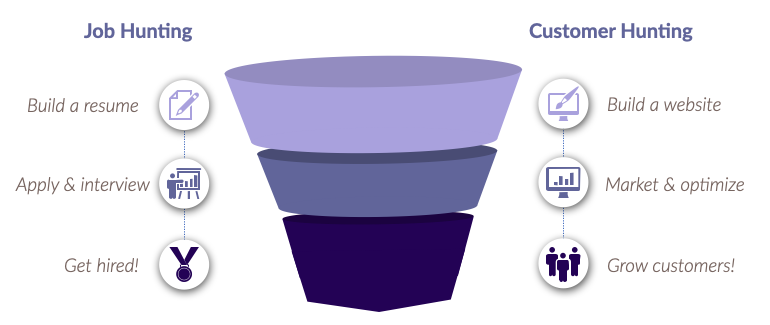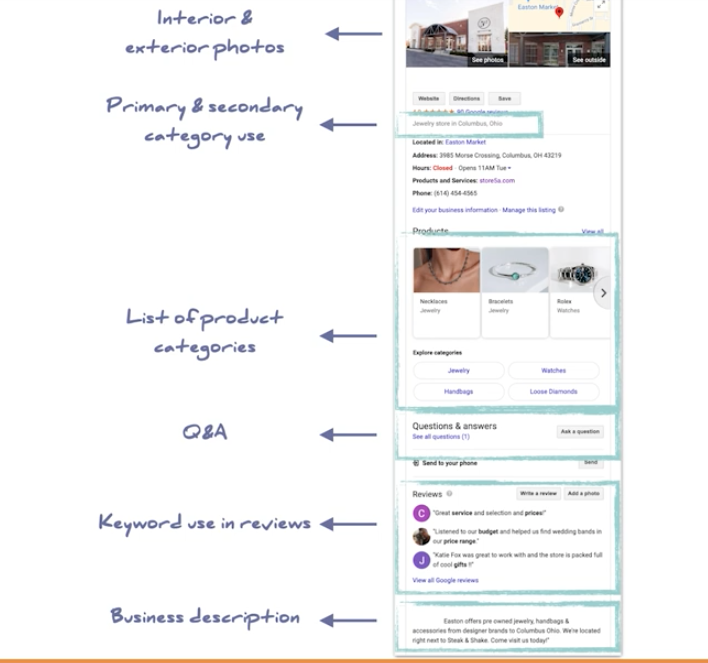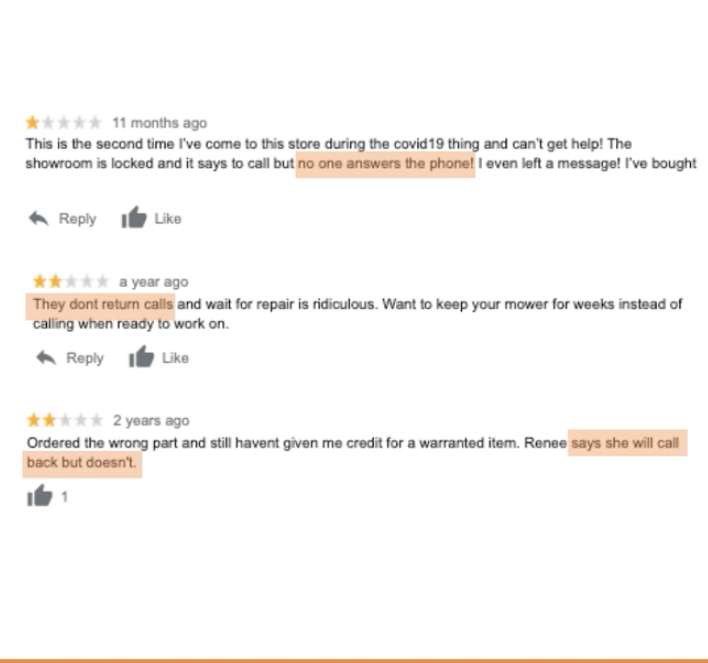Optimize Your Brand’s Web Presence Like A Resume

Simple steps to improve local SEO and drive new business.
Local SEO has tremendous power to gain customers and grow bottom-line revenue. About 46% of all Google searches express local intent, meaning the search includes a specific region, and 93% of consumers use the internet to find a local review. But too many businesses do too little to improve local SEO, and that leaves money on the table. Even if a business doesn’t have a brick-and-mortar location, there is value in improving local SEO, and it's easier to do than you may think. In fact, it's extraordinarily similar to building a great resume.
When considering your local SEO strategy, think of the searcher as a hiring manager. A hiring manager has a specific position they’re looking to fill. To get the job, candidates need to make sure their resume meaningfully answers the needs of the hiring manager. Local SEO is similar. A searcher has a specific need, and they turn to a search engine to fill it. Just like a job candidate, brands must craft their resume so that it proves their competency and wins the trust of searchers.

To evaluate your local SEO presence, start by Googling your brand name. Look at the search results as your resume. Your presence on Google must inspire the searcher to “hire” you for your products or services. But, just like you can’t create a resume and expect employers to flock to you, you can’t build a website and expect searchers to pour in. Once you’ve created a website, it’s equally important to create a marketing plan that helps users find you and to implement an ongoing optimization strategy.

In both the job market and online searches, hiring managers evaluate resumes based on three criteria.
- Proximity: the candidate is near my location
- Relevance: the candidate has relevant experience
- Prominence: the candidate is well-known for doing the job well
When you’re optimizing your brand resume, increase your chances of getting selected by making sure your brand meets these requirements.
1. Optimizing for Proximity
In the hiring process, the first thing hiring managers evaluate is whether or not the candidate is in the right location. The same is true for online searchers who are looking for a product or service.
Over the last several years, we’ve seen an influx of spammy business practices. Brands commonly create fake listings in densely populated areas or misrepresent their business information on Google. This could be a law practice in Columbus setting up a Google My Business location for a fake office in Pittsburgh, or a retail location stuffing their business name with keywords. While these types of shortcuts can lead to performance increases, they’re generally easily dealt with by reporting the listings to Google (thus removing them from search and further limiting local competition).
To gain a competitive advantage, brands must actively monitor and report competitors who employ less-than-excellent business practices. Last year Google released a spam redressal form, enabling brands to report fake businesses directly to Google My Business so that it can take action. We help clients identify fake businesses and correct the lies, or remove the competitors from search results entirely. Think of this like removing fake resumes from the top of the pile. This levels the local playing field and improves the likelihood that your brand will show up at the top of the search results.

We use Google My Business’s new redressal form to keep competitors from having unfair advantages.
2. Optimizing for Relevance
Next, hiring managers evaluate job candidates based on relevant experience. A candidate’s resume must prove that they’ve held jobs with comparable roles and responsibilities as the position to which they’re applying. Similarly, brands must show potential customers that they competently offer the products and services searchers are expressing interest in.
To build trust with searchers, start by creating relevant and helpful location pages on your website. Each physical business location should have a dedicated page. These pages should reflect your brand’s offer and what makes your brand different. Think of these not just as pages, but as location experiences. What are searchers looking for and how can you help them easily find it? Make it easy for potential customers to validate your relevance by catering content to their specific need and location. At minimum, include your contact information, a list of products and services that link to related pages, and relevant social proof such as testimonials, reviews and case studies.
 Make it easy for potential customers to see that your brand has relevant experience with a dedicated location page for each physical business address.
Make it easy for potential customers to see that your brand has relevant experience with a dedicated location page for each physical business address.
Take your website to the next level by supporting location pages with content that helps local audiences along the buying journey. Create location-relevant blog posts, internal links to appropriate services pages and employee bios, and location-specific testimonials. Let’s say you’re a pet boarding resort based in Columbus and Charlotte. The Columbus page should feature testimonials from happy customers from Columbus. For searchers in Charlotte who are looking for pet resources, the Charlotte location page should link to blog posts that share insights on high-quality nearby pet stores and veterinarians, and feature a CTA to speak with a representative based in Charlotte.
A successful local SEO strategy doesn’t stop with your website. Today, many people convert without ever visiting a brand’s site—about 70 percent of calls and direction requests for businesses come directly from Google. This is a shift that was almost unfathomable a few years ago, leading industry expert Mike Blumenthal to point out that Google has become your new homepage. Maximizing the conversion potential requires brands to take full advantage of Google My Business profiles, including new features and capabilities. Craft the primary and secondary categories so that they’re inclusive and relevant, and utilize other features including available products, business descriptions, relevant images and up-to-date contact information.
We optimized a local jewelry retailer’s Google My Business profile by reflecting its core services in the primary category, and making sure the secondary category is inclusive of additional offerings. We included product categories so that customers can easily shop for what they’re looking for, without it being overly taxing on the brand to maintain individual product listings. We further optimized the profile by generating customer reviews that feature keywords about the products and services provided, helping searchers recognize the client’s relevance to what they’re searching for. This empowers customers to learn about the brand and contact it directly through Google, providing a smoother and more intuitive customer journey.

Optimizing for Prominence
To create a standout resume, candidates must include solid references to show they’re known for doing the job well. Similarly, brands can prove their prominence through third-party citations and showcasing glowing customer reviews.
While brands spend time and energy building their presence on owned channels such as websites and Google My Business, many overlook the importance of appearing on niche third-party sites. Having accurate citations on industry-specific third-party listings not only helps searchers find your brand, it also helps them verify that your brand is reputable. For example, a search for “best jewelry retailer in Columbus” will surface many third-party roundup lists. To optimize our jewelry retail client’s prominence, we evaluate its presence on third-party sites, including reviews, website ranking and overall sentiment. We address both how clients talk about themselves on their own websites, and how other websites talk about clients. This helps brands make an impact where searchers are already looking.
Customer reviews greatly impact the customer journey. When making a purchasing decision, 87% of consumers read online reviews for local businesses. Not only do customer reviews demonstrate your prominence to potential customers, they also offer opportunities for operational improvements. Brands need to take advantage of the feedback they receive, both positive and negative. When evaluating negative reviews, identify common themes that can be easily fixed. Customers will be grateful that you listened to their feedback. For a retail client, we saw several customers reporting that they couldn’t get in touch with the brand. Operationalizing this change helped the brand evolve and become a better brand to customers.
Start Optimizing Your Resume
Local SEO performs best when coupled with keyword research, digital PR, website strategy, conversion optimization and more, depending on your goals. While local SEO requires some level of specialization and a unique strategy, there is plenty you can do to improve performance simply by being a customer-centric brand focused on continuous improvement. Optimizing for proximity, relevance and prominence not only translates to improved SEO performance, but it also helps grow customers and impact bottom-line revenue.
If you’re looking to learn more about impacting your local SEO, view our services or contact us today.

